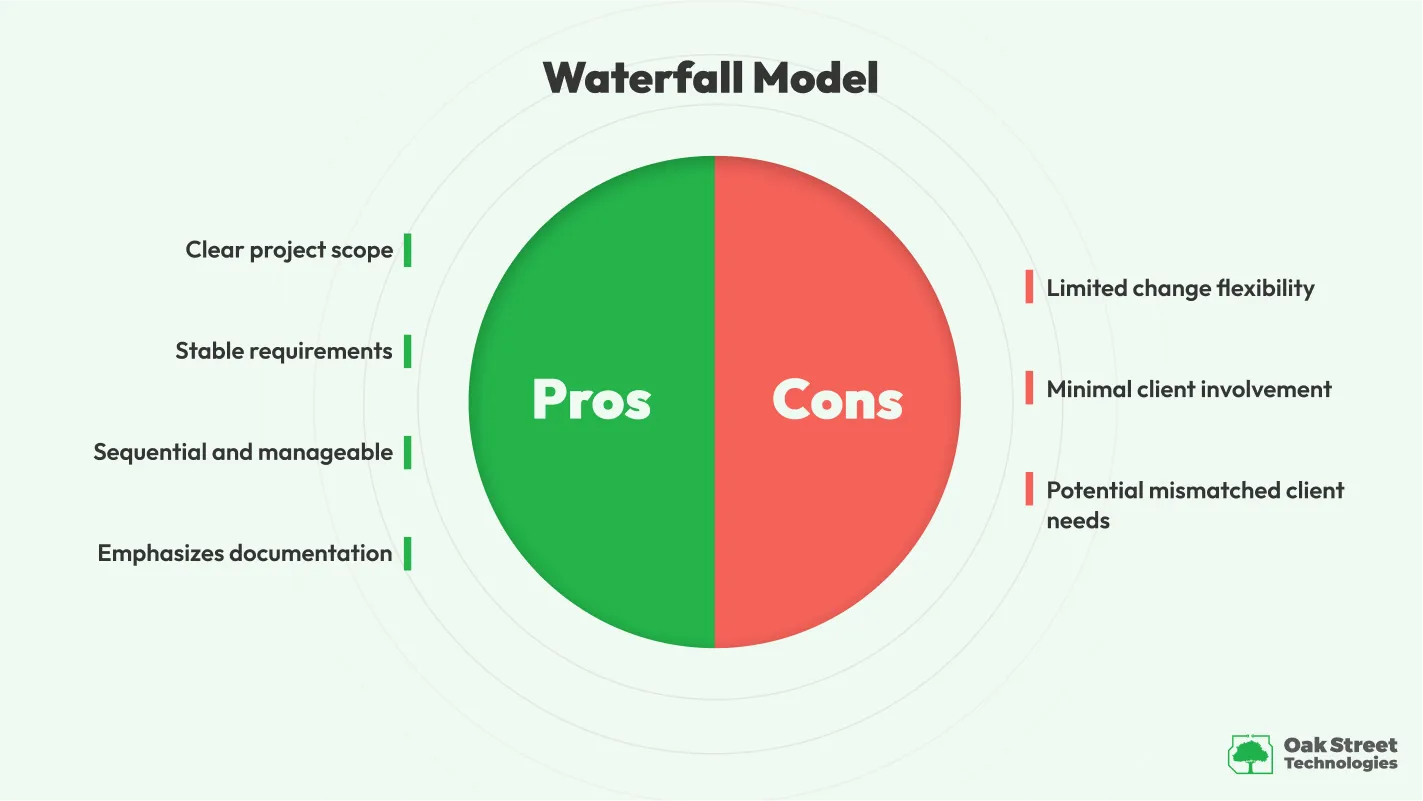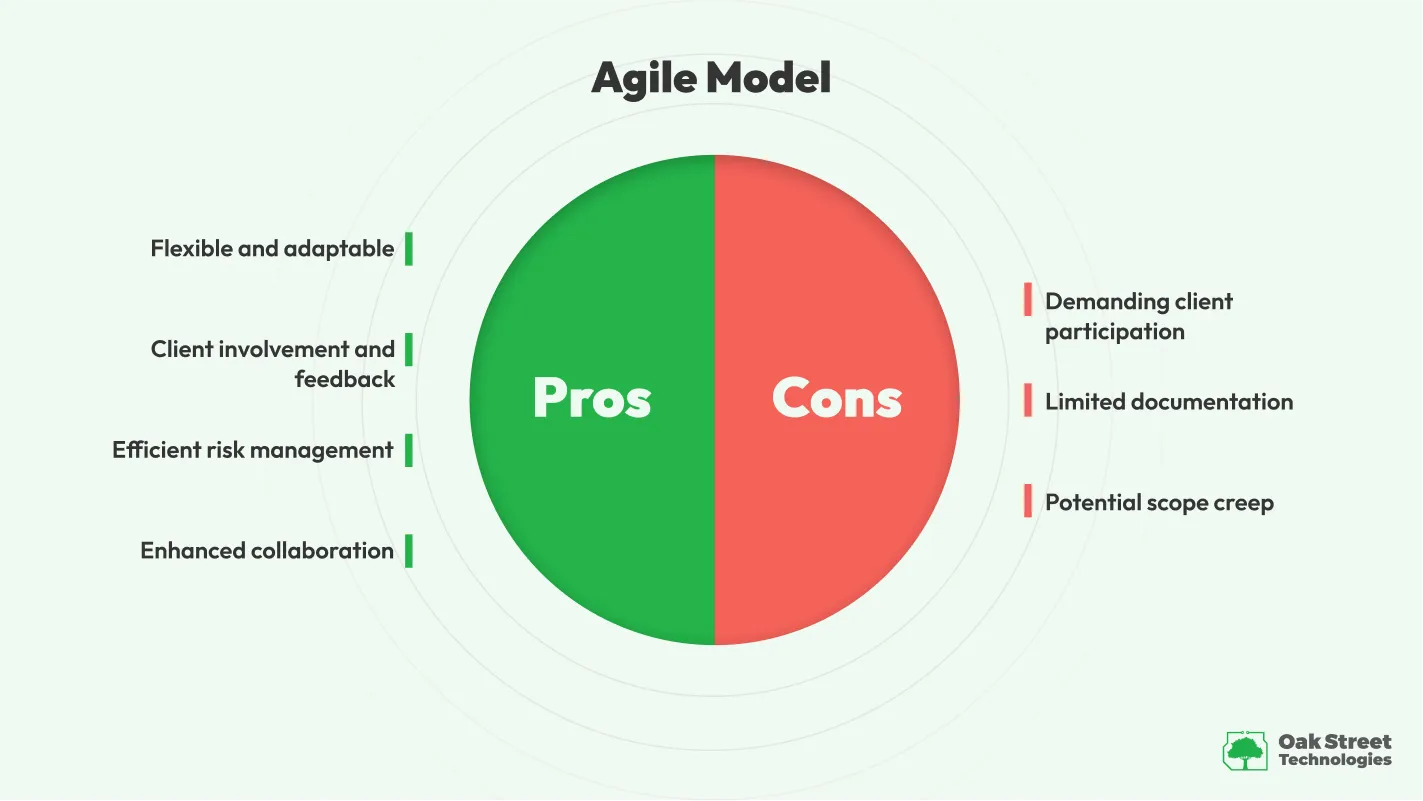In today’s rapidly evolving technological landscape, software development has become an indispensably crucial aspect of every business. With numerous software development models available, choosing the right one can be a seriously daunting task. In this blog, we will explore the top three software development models, their key features, and help you make an informed decision regarding the most suitable approach for your project.
Waterfall Model: A Traditional Approach
The Waterfall Model is a linear and sequential software development process. It follows a structured approach, where each phase is completed before moving onto the next one. The key stages in this model include requirements gathering, design, implementation, testing, deployment, and maintenance.

Pros of the Waterfall Model:
- Clear and well-defined project scope
- Suitable for projects with stable and unchanging requirements
- Easy to understand and manage due to its sequential nature.
- Emphasizes documentation, making it easier to maintain and update the system.
Cons of the Waterfall Model
- Limited flexibility in accommodating changes during the development process
- Client involvement is minimal until the end, which may lead to misalignments.
- High risk of delivering an end product that does not fully meet the client’s evolving needs.
Agile Model: Embrace Flexibility and Collaboration
The Agile Model is an iterative and incremental software development approach. It focuses on adaptability and continuous improvement throughout the project lifecycle. Agile methodologies such as Scrum and Kanban promote cross-functional collaboration, regular client feedback, and the delivery of functional increments called “sprints.”

Pros of the Agile Model:
- Highly flexible and adaptable to evolving requirements.
- Continuous client involvement and feedback ensure higher satisfaction.
- Efficient risk management and shorter development cycles
- Enhanced collaboration and communication among development teams
Cons of the Agile Model:
- Requires active client participation and regular feedback, which can be demanding.
- Lack of detailed documentation may pose challenges for future maintenance.
- May lead to scope creep if not managed properly.
DevOps Model: The Integration of Development and Operations
The DevOps Model is a collaborative and integrated approach that focuses on merging development and operations teams. It emphasizes automating processes, enhancing communication, and ensuring faster and more reliable software delivery. DevOps promotes a culture of continuous integration, continuous delivery, and continuous monitoring.

Pros of the DevOps Model:
- Streamlines the development and deployment process.
- Faster time-to-market through automation and continuous delivery.
- Improved collaboration between development and operations teams.
- Enables quick bug fixes and feature enhancements through continuous monitoring.
Cons of the DevOps Model:
- Requires a significant initial investment in automation tools and infrastructure.
- Requires skilled personnel with knowledge of both development and operations.
- May face resistance and challenges in organizations with traditional siloed structures
Choosing the Right Software Development Models
The choice of a software development model depends on various factors, including project requirements, budget, timeline, and team dynamics. Here are a few guidelines to help you make an informed decision:
- If you have well-defined and stable requirements, the Waterfall Model might be suitable.
- For projects with changing requirements and a need for client collaboration, Agile is a wise choice.
- If your goal is faster delivery, continuous improvement, and seamless integration, consider adopting the DevOps Model.
In a nutshell, selecting the right software development model is crucial for the success of your project. While the Waterfall Model provides structure and predictability, the Agile Model emphasizes flexibility and collaboration. On the other hand, the DevOps Model focuses on seamless integration and faster delivery. Assess your project requirements, consider the pros and cons of each model, and choose the one that aligns best with your objectives. Remember, there is no one-size-fits-all solution, and adapting to the ever-changing technological landscape is key to success.



